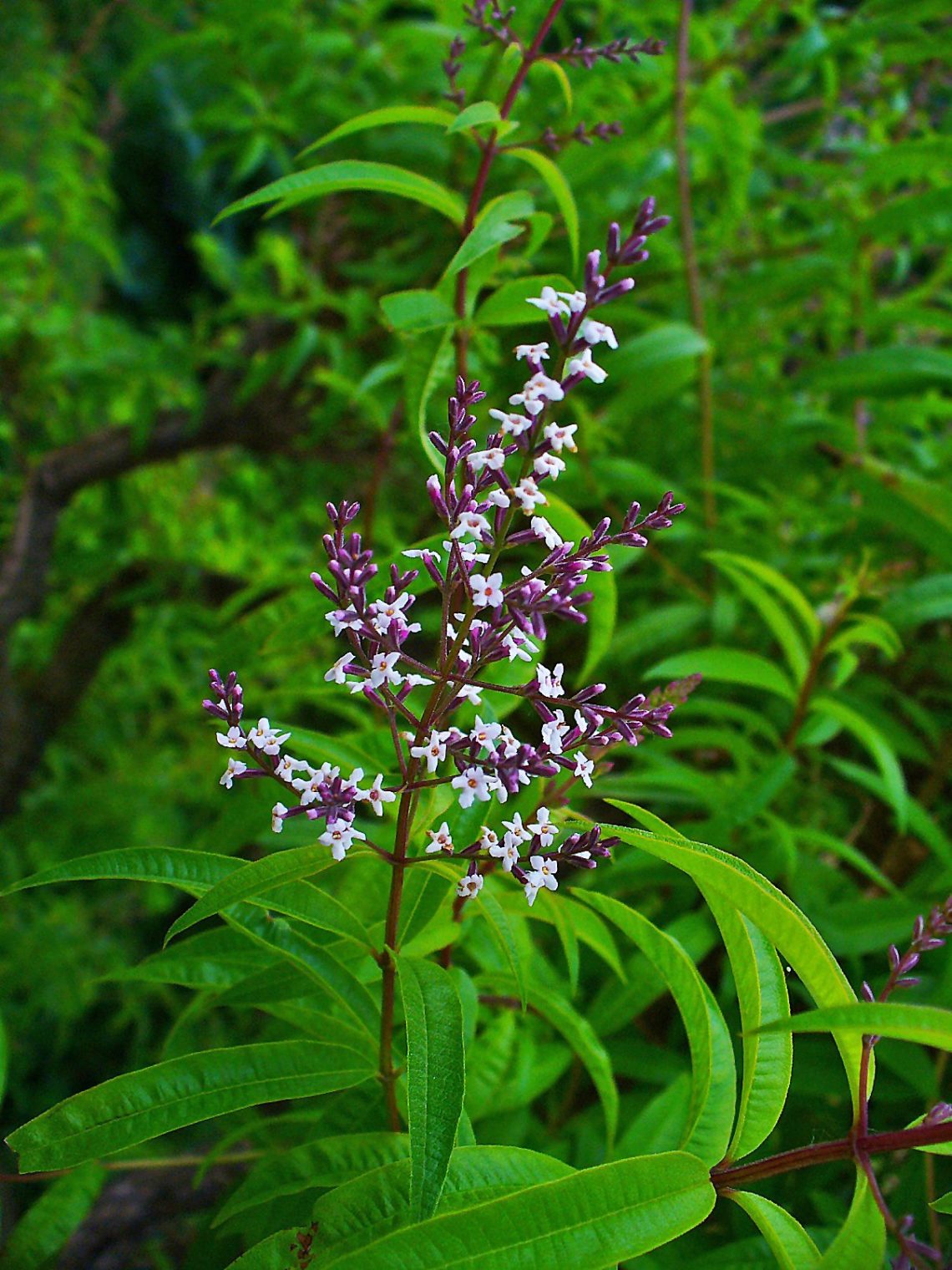Of all lemon-scented and flavored herbs, lemon verbena (Aloysia triphylla) is by far the winner when it comes to fresh lemon taste and smell. Brush the narrow, pointy leaves of this shrub, and you’ll release the tempting odor of lemon.
A South American native, lemon verbena grows outdoors in most climates during the summer months. In mild climates it will go dormant during the winter. In climates that freeze, it’s best to grow the plant in a container and bring it indoors for the winter months.
Lemon verbena makes a tasty herbal tea. It’s a popular ingredient in a number of commercially prepared teas, including Vervein tea. To use the leaves for herbal tea, simple rinse them well and place the leaves in hot water, allowing them to steep for five minutes. Remove the leaves and add sweetener to taste.
Also use lemon verbena to flavor fruit desserts and ice cream, and you can add it to poultry dishes, marinades, and vinegar. It also makes a fragrant potpourri and is often used medicinally for stomach problems.
To successfully grow your own lemon verbena, keep the following tips in mind.
Provide high light. Lemon verbena requires bright, filtered light in order to thrive. Outdoors, place in a full sun or brightly lit filtered light location. Indoors, grow the plant one to two feet from a sunny window or under full-spectrum lighting.
Give lemon verbena room to grow. If you grow lemon verbena in the ground, keep in mind that it will reach 3- to 6-feet tall and 3-feet wide. To plant in a container, go to the next pot size up from the nursery container. Use high-quality potting soil that drains well.
Provide excellent drainage. Lemon verbena doesn’t do well in compacted, heavy soil that prevents good drainage. If drainage is a problem, amend the soil with 30-50 percent compost.
Water lemon verbena when the top 2 to 3 inches of soil has dried. Lemon verbena likes the soil a little on the dry side.
Fertilize. Lemon verbena is a heavy feeder. Give the plant a dosage of an all-purpose organic food monthly, from spring into early fall.
Prune. Lemon verbena becomes leggy and rangy when allowed to roam free. Pinching back some new leaves causes the plant to become bushier. Also prune off any small white flowers if they appear, which will keep the plant producing leaves. Once the plant goes dormant in the fall, do a light pruning to shape.
Dry leaves by placing them on a screen or hanging a bunch upside down in a cool, dark area. When the leaves are completely dried, they can be put in a sealed container that doesn’t let in light. When you want to use the leaves, crushing them releases the heavenly lemon scent and flavor.
Julie Bawden-Davis is a garden writer and master gardener, who since 1985 has written for publications such as Organic Gardening, Wildflower, Better Homes and Gardens and The Los Angeles Times. She is the author of seven books, including Reader’s Digest Flower Gardening, Fairy Gardening, The Strawberry Story, and Indoor Gardening the Organic Way, and is the founder of HealthyHouseplants.com.

